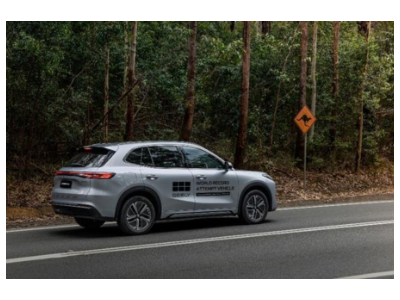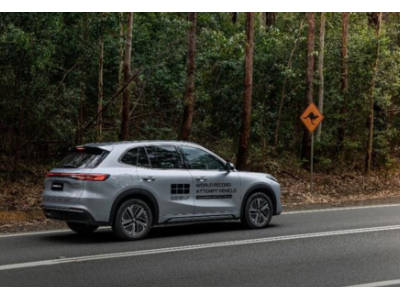Thu Dec 18
Licheng District of Jinan, China: Creating a Novel Nexus for Cultural, Commercial, and Travel Development in Trendsetting Precinct
 2023-07-24
2023-07-24
On July 6th, an influx of visitors gathered at 579 Baigongji, located at 579 Hualong Road, Licheng District, Jinan, to witness the opening of the Apollo Art Museum’s Andy Warhol - Post-Industrial Pop Art Exhibition. Simultaneously, a group of young individuals indulged in the delight of artisanal craftsmanship at the Jiangxin Wood Workshop, while another crowd engaged in an exuberant frisbee battle at the 579 sports-themed restaurant. As the sun began to set, families were seen enjoying playful activities on the sandy beach within the park. What was once a dilapidated and antiquated market has now metamorphosed into a hotspot, sought after by the youth.
In the urban revitalization process, Licheng District is embarking on a journey to create a novel nexus for cultural, commercial, and travel development by infusing businesses with a cultural essence.
The Transformation of an Aged Marketplace
Stepping into 579 Baigongji, one finds a fusion of industrial aesthetics, renowned art exhibits, artsy bookstores and cafes, and a haven for woodworking and fitness. These attractions have successfully drawn in successive waves of enthusiastic young people. “Since its grand opening in October 2022, the weekend footfall at 579 Baigongji has surpassed 12,000 visits,” stated Wei Liujiang, Baigongji’s operational general manager.
Merely three years ago, this very site was an antiquated and dilapidated wholesale market, comprising diverse businesses such as second-hand goods, building materials, tea, and pet supplies. Due to the inherent issues associated with these businesses, the market was plagued by overcrowding, disorder, and untidiness. Some structures were in disrepair, lacking proper fire safety facilities, posing grave safety hazards. In December 2020, the renovation project for this area was officially initiated.
The park meticulously considered the characteristics of the original businesses and ultimately settled on two predominant themes. “Previously, this area housed a home furnishing and building materials market, which provided a foundation for home interior design. We aimed to foster a circle of interior designers,” elucidated Wei Liujiang. Simultaneously, focusing on niche and trendy sports, the park harnessed the elements of motorcycling culture to cultivate the motorbike sports scene. Additionally, they introduced sports such as frisbee, baseball, and rugby, cementing its status as the area’s secondary theme.
“Centered around these two core themes, we incorporated complementary formats such as art museums and bookstores to gradually form a park dominated by niche cultures,” Wei Liujiang expounded. At present, Baigongji is operating its first phase, covering an area of approximately 30,000 square meters. Following the completion of the second and third phases, the overall area will extend to approximately 120,000 square meters.
Appealing to the Youth
Over a decade ago, the park was rather secluded, surrounded by aged residential neighborhoods, which initially contributed to the development of the old market. However, with the city’s advancement, the surrounding environment and customer base underwent a metamorphosis.
Young customers constitute the primary consumer group. But the question arose - how to captivate the interest of the youth?
Within the 579 Baigongji mini-program in WeChat, a constantly updated schedule features a plethora of activities, including improvisational theater, hands-on woodworking experiences, frisbee tournaments, physical training challenges, and more. It tailors scenarios, atmospheres, and supporting amenities to cater to various interest groups, effectively drawing in the young populace. The tri-level activity system involving the park, businesses, and the community serves as a vital tool in enhancing customer retention within the park.
Commencing from 2021, 579 Baigongji has invested tens of millions annually to host a diverse array of creative events, encompassing art exhibitions, roadshows, niche sports, press conferences, and competitions. To date, they have organized grand events such as the Baigongji Motorcycle Culture Festival, the Maimaihehe Camping Festival, the Baigongji Night Feast Concert, the Nadam Wrestling Tournament, the Keith Haring Art Exhibition, and various niche sports gatherings such as frisbee and flag football. In June alone, the park hosted an impressive 96 events, reaching its zenith.
To accommodate these events, the park has allocated over 4,000 square meters of shared space and collaboratively negotiated with tenants to reserve areas within their establishments as event venues. In the short term, this may entail a partial loss of profit for the businesses. However, from a long-term perspective, this constitutes an indispensable strategy for fostering a thriving and bustling atmosphere.
“In the early days of our opening, the majority of visitors were elderly people and children, mainly from the nearby residential communities,” Wei Liujiang recalled. “Subsequently, the popularity surged, and currently, we witness approximately 4,500 visitors on weekdays and over 12,000 on weekends, with individuals aged between 18 to 35 constituting more than half of the footfall.”
Interconnected Sectors Creating a Collective Whole
If 579 Baigongji embodies a niche gathering hub, Huanlian 1904 Night Economy-themed block, situated 3 kilometers to the north, emphasizes mass consumer projects. On weekdays, foot traffic hovers around 80,000 visits, while during weekends and holidays, the numbers escalate to over 100,000.
Recently, the night market has relocated to a new venue, undergoing comprehensive upgrades with an accentuated focus on cultural empowerment. The revamped night market revolves around a train theme, featuring a steam locomotive and train carriages adorned with vibrant graffiti, serving as prominent landmarks for visitors to capture picturesque moments. Additionally, the night market’s unique charm lies in the Jiaozhou-Jinan railway, traversing above the market, with passing trains contributing to the night market’s distinct ambience.
In tandem with this, the new night market has augmented its infrastructure, enriched its array of businesses, and diversified its offerings to cater to customer demands. Currently, the first-phase project encompasses five zones: dining, department stores, pet supplies, fashion, and carnival, encompassing a wide array of experiences from dining and shopping to entertainment. The second phase is currently in progress, promising to introduce even more diverse formats, including a specialty bar street and thematic hotels.
As the two major projects, 579 Baigongji and Huanlian 1904, progressively intertwine, the Licheng Dongfeng Area is swiftly becoming a new congregation point for young consumer groups. Licheng seizes this opportune moment to cultivate a thriving commercial ecosystem.
By establishing interconnected transportation systems, mutually reinforcing industries, and shared facilities, Licheng District of Jinan, vigorously promotes interconnectivity among various regions. These significant sectors complement each other, harmoniously evolving from individual small business clusters to a novel integrated space that unifies cultural, commercial, and travel elements.
Declaración: este artículo se reproduce desde otros medios. El propósito de la reimpresión es transmitir más información. No significa que este sitio web esté de acuerdo con sus puntos de vista y sea responsable de su autenticidad, y no tiene ninguna responsabilidad legal. Todos los recursos de este sitio se recopilan en Internet. El propósito de compartir es solo para el aprendizaje y la referencia de todos. Si hay una infracción de derechos de autor o propiedad intelectual, por favor déjenos un mensaje.




